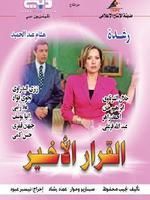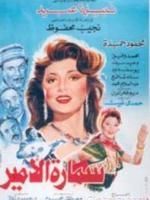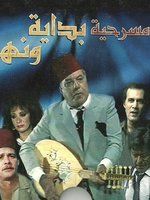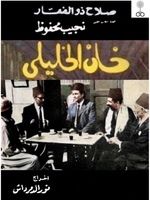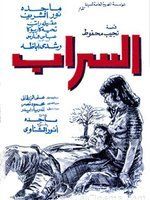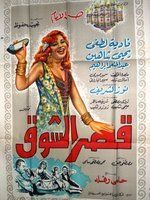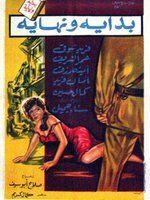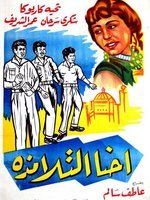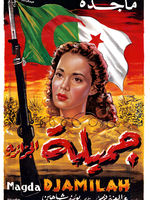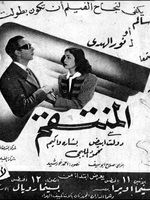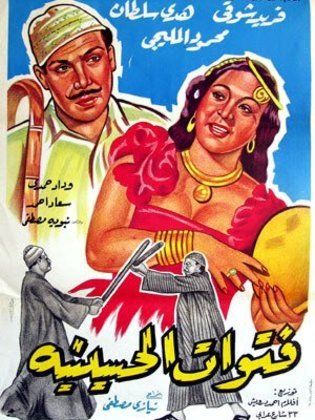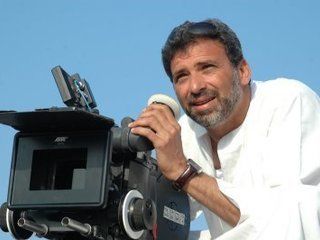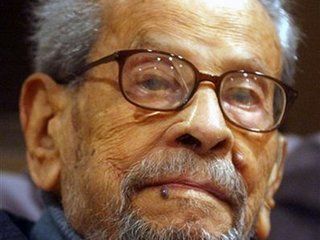Naguib Mahfouz (1911 - 2006) نجيب محفوظ
Biography
Born on December 11th 1911, he was an Egyptian writer who won the 1988 Nobel Prize for Literature. He is regarded as one of the first contemporary writers of Arabic literature, along with Tawfiq el-Hakim, to explore themes of existentialism He published over 50 novels, over 350...Read more short stories, dozens of movie scripts, and five plays over a 70-year career. Many of his works have been made into Egyptian and foreign films. Mahfouz's central work in the 1950s was the Cairo Trilogy, an immense monumental work of 1,500 pages, which the author completed before the July Revolution. The novels were titled with the street names Palace Walk, Palace of Desire, and Sugar Street. Mahfouz set the story in the parts of Cairo where he grew up. They depict the life of the patriarch el-Sayyed Ahmed Abdel Gawad and his family over three generations, from World War I to the 1950s, when King Farouk I was overthrown. With its rich variety of characters and psychological understanding, the work connected Mahfouz to such authors as Balzac, Dickens, Tolstoy, and Galsworthy. Mahfouz ceased to write for some years after finishing the trilogy.
-
- Nationality:
- Egypt
-
- Date of Birth:
- 11 December 1911
-
- Birth Country:
- Egypt
-
- Death Country:
- Egypt
Watch Online (Sponsored By Yango Play)
-
-
- 2 Qahwa
- 2025 - Series
-
-
- Al Shater
- 2025 - Movie
-
-
- Ward w Shokolata
- 2025 - Series
-
-
- Rocky El Ghalaba
- 2025 - Movie
-
-
- One Last Sin
- 2025 - Series
-
-
- Siko Siko
- 2025 - Movie
-
Writer (152)
-
-
- Akhir Al Muegizat
- 2024 - Movie - Short
-
-
- Bayn El Samaa W El Ard
- 2021 - Series
-
-
- El Madaq Alley
- 2021 - Play
-
-
- Afrah Al Koba
- 2020 - Play
-
-
- Tareeq
- 2018 - Series
-
-
- ِAfrah El-Qobba
- 2016 - Series
- (Story)
More (146)
-
-
- Al Ostaz Muharram
- 2016 - Movie - Short
-
-
- Everything Is Normal
- 2014 - Play
-
-
- The Groom
- 2013 - Series - Radio
-
-
- Before Departure
- 2012 - Movie - Short
-
-
- Lamah albasar
- 2012 - Movie
- (Writer)
-
-
- El Gars Yarn
- 2011 - Movie - Short
-
-
- Al Ghurfa Raqam 12
- 2011 - TV
- (Story & Screenplay)
-
-
- Al Nagat
- 2010 - Play
- (Writer)
-
-
- Days of Love and Madness
- 2010 - Series - Radio
-
-
- Al Nashwah Fi Novamber
- 2009 - Movie
- (Writer)
-
-
- Al Harafeesh 3: Al Hob wa Al Qudban
- 2006 - Series
-
-
- Al Harafeesh 2: Shams Al-Din
- 2005 - Series
- (Writer)
-
-
- Qatat Baladi
- 2005 - Movie
- (Story)
-
-
- Final Decision
- 2004 - Series
- (Writer)
-
-
- Al Mamurah
- 2004 - Series
- (Writer)
-
-
- Noor Al Qamar
- 2002 - Series
- (Story)
-
-
- Hadith Al-Sabah wal Masaa'
- 2001 - Series
-
-
- My Fate and Destiny
- 2001 - Series
- (Story)
-
-
- Al Aqdar
- 2000 - Series
- (Story)
-
-
- Amshir
- 2000 - Series
- (Writer)
-
-
- Hadrt Al Mohtrm
- 1999 - Series
-
-
- Al Harafeesh: Ashour Al-Naji
- 1998 - Series
-
-
- Al Les W Al Kelab
- 1998 - Series
- (Writer)
-
-
- Hekaya Bela Bedaya w Nehaya
- 1997 - Series
- (Writer)
-
-
- khayal el 3ashe2
- 1997 - Movie
- (Writer)
-
-
- Midaq Alley
- 1995 - Movie
- (Writer)
-
-
- Sahbt Al Esma
- 1995 - TV
- (Writer)
-
-
- Sabah Al Ward
- 1995 - Series
- (Writer)
-
-
- Al Khawf
- 1994 - TV
- (Writer)
-
-
- Eyes Of Others
- 1994 - Series
-
-
- The Beginning and the End
- 1993 - Movie
- (Writer)
-
-
- Koshtmor
- 1993 - Series
- (Story)
-
-
- Samara Al-Amir
- 1992 - Movie
- (Writer)
-
-
- Heart of Night
- 1992 - Series
- (Writer)
-
-
- Nour El Eyoun
- 1991 - Movie
- (Writer)
-
-
- Tales of our Neighborhood
- 1990 - Play
- (Writer)
-
-
- Layel Wi Khawana
- 1990 - Movie
- (Writer)
-
-
- Qalb Eleil
- 1989 - Movie
- (Writer)
-
-
- Khetta Baeedat Al Mada
- 1988 - Movie
- (Writer)
-
-
- Qasr Alshowk
- 1988 - Series
- (Writer)
-
-
- Have a Good Evening
- 1987 - Movie
- (Writer)
-
-
- Al Baqi Min Al Zaman Saea
- 1987 - Series
- (Writer)
-
-
- Bayn alqasrayn
- 1987 - Series
-
-
- Owner of the Picture
- 1987 - Movie
-
-
- El-Toot wel Nabboot
- 1986 - Movie
-
-
- Al-go'u
- 1986 - Movie
-
-
- Al Hob Fawk Hadabat Al Haram
- 1986 - Movie
- (Writer)
-
-
- Al Harafeesh
- 1986 - Movie
- (Writer)
-
-
- Time of Love
- 1986 - Movie
- (Story)
-
-
- Men Fadlek Wa Ihsanek
- 1986 - Movie
- (Writer)
-
-
- A Stigma
- 1986 - Movie
- (Story)
-
-
- Al Motarad
- 1985 - Movie
-
-
- Bidaya wa Nihaya
- 1985 - Play
-
-
- Madaq Alley
- 1985 - Play
- (Story & Screenplay)
-
-
- Shahd Al-Maleka
- 1985 - Movie
- (Writer)
-
-
- Alkhadima
- 1984 - Movie
- (Story)
-
-
- Ayuwb
- 1983 - Movie
- (Story)
-
-
- Asr El Hob
- 1983 - Series
- (Writer)
-
-
- Nazira to the Rescue
- 1982 - Movie
- (Writer)
-
-
- Wikalet El-Balah
- 1982 - Movie
- (Writer)
-
-
- Al Ragul Allazi Faqad Zakaratoh Maratayn
- 1981 - Series
- (Writer)
-
-
- Devil Preaches/ The Titans
- 1981 - Movie
- (Writer)
-
-
- Ahl El-Qema
- 1981 - Movie
- (Writer)
-
-
- Fetewat Boulaq
- 1981 - Movie
- (Writer)
-
-
- aldunya aljadida
- 1980 - Series
- (Writer)
-
-
- Alsharida
- 1980 - Movie
- (Writer)
-
-
- El Mottaham
- 1980 - Movie
- (Writer)
-
-
- Tahqiq
- 1980 - Movie
- (Writer)
-
-
- Al Siman wa Al Kahreef
- 1978 - Series
- (Writer)
-
-
- The Criminal
- 1978 - Movie
- (Writer)
-
-
- Qaher Al Zalam
- 1978 - Movie
-
-
- Al Jarima
- 1977 - Series
- (Writer)
-
-
- El Muznibun
- 1976 - Movie
- (Writer)
-
-
- Tawhida
- 1976 - Movie
-
-
- Khan Al-Khalili
- 1976 - Series
-
-
- Love in the Rain
- 1975 - Movie
- (Writer)
-
-
- Al-Karnak
- 1975 - Movie
- (Writer)
-
-
- The Thief and the Dogs
- 1975 - Series
- (Story & Screenplay)
-
-
- 'Amirat habiun 'ana
- 1975 - Movie
- (Writer)
-
-
- Beginning and End
- 1975 - Play
- (Author)
-
-
- Al Sokkareya
- 1973 - Movie
-
-
- Al-Shahat
- 1973 - Movie
- (Story)
-
-
- Dhat alwajhayn
- 1973 - Movie
- (Writer)
-
-
- Emberatoreyet Meem
- 1972 - Movie
-
-
- Forbidden Photos: First Story (Forbidden)
- 1972 - Movie
- (Story)
-
-
- Forbidden Photos: Third Story (Photo)
- 1972 - Movie
- (Writer)
-
-
- Miramar
- 1972 - Play
- (Writer)
-
-
- Al-Ikhtyar
- 1971 - Movie
- (Writer)
-
-
- Tharthara Fawq El Nil
- 1971 - Movie
-
-
- Aboud Sings
- 1971 - TV
-
-
- Al-Sarab
- 1970 - Movie
- (Writer)
-
-
- The Egyptian Dalal
- 1970 - Movie
-
-
- Deprivation Well
- 1969 - Movie
-
-
- A Bit of Torment
- 1969 - Movie
-
-
- Miramar
- 1969 - Movie
- (Writer)
-
-
- Three Stories
- 1968 - Movie
-
-
- Al-Seman W Al-Kahreef
- 1967 - Movie
- (Writer)
-
-
- The Price of Freedom
- 1967 - Movie
-
-
- Midnight Dream
- 1967 - Series
- (Writer)
-
-
- Al-Qahira 30
- 1966 - Movie
- (Story)
-
-
- Khan El-Khalili
- 1966 - Movie
- (Story)
-
-
- Qasr El Shouq
- 1966 - Movie
- (Writer)
-
-
- El Tawta Cafe
- 1966 - Play
- (Author)
-
-
- The Thief and the Dogs
- 1965 - Play
- (Author)
-
-
- El Tareeq
- 1964 - Movie
-
-
- Bein Al-Qasrein
- 1964 - Movie
-
-
- Khan Al Khalili
- 1964 - Play
- (Writer)
-
-
- Al Nasser Salah El Deen
- 1963 - Movie
-
-
- Zoqaq el madaq
- 1963 - Movie
- (Writer)
-
-
- Elless wel Kelab
- 1962 - Movie
- (Writer)
-
-
- Bedaya wa Nehaya
- 1960 - Movie
- (Writer)
-
-
- Between the Two Palaces
- 1960 - Play
- (Writer)
-
-
- Ehna Al-Tlamzaa
- 1959 - Movie
- (Scriptwriter)
-
-
- Allahu Akbar
- 1959 - Movie
- (Writer)
-
-
- Ana Horra
- 1959 - Movie
- (Writer)
-
-
- بداية ونهاية
- 1959 - Play
- (Writer)
-
-
- Bin El-Samaa W Al-Ard
- 1959 - Movie
- (Story & Screenplay)
-
-
- El Tareeq El Masdood
- 1958 - Movie
- (Writer)
-
-
- Alhariba
- 1958 - Movie
- (Writer)
-
-
- Jamila Bouhired
- 1958 - Movie
- (Scriptwriter)
-
-
- Women's Enchanter
- 1958 - Movie
- (Story & Screenplay)
-
-
- Thief on Holiday
- 1958 - Movie
- (Scriptwriter)
-
-
- El Fetewa
- 1957 - Movie
- (Writer)
-
-
- The Scornful Man
- 1956 - Movie
- (Writer)
-
-
- Darb El Mahabil
- 1955 - Movie
- (Scriptwriter)
-
-
- Al-Wahsh
- 1954 - Movie
- (Story & Screenplay)
-
-
- Ga'alonii Mogriman
- 1954 - Movie
- (Writer)
-
-
- Fatwat Al-Huseeinya
- 1954 - Movie
- (Story & script)
-
-
- Raya W Skina
- 1952 - Movie
-
-
- Lak Youm ya Zalem
- 1951 - Movie
- (Scriptwriter)
-
-
- Zal Al Sharr
- 1949 - Movie - Short
- (Writer)
-
-
- The Avenger
- 1947 - Movie
- (Writer)
-
-
- Love Above the Pyramid
- 0 - Series - Radio
- (Writer)
-
-
- The Last Party
- 0 - TV
- (Story)
-
-
- The Mirage
- 0 - Series - Radio
- (Story)
-
-
- The Worshiped Evil
- 0 - Series - Radio
- (Story)
-
-
- The Boys of Our Neighborhood
- 0 - Series - Radio
- (Writer)
-
-
- Bayt Sayee Al Somaa
- 0 - TV
- (Writer)
-
-
- Unwithered Flowers
- 0 - Series - Radio
- (Writer)
-
-
- Inescapable Destiny
- 0 - Series - Radio
- (Story)
-
-
- Asr Al Hob
- 0 - Series - Radio
- (Story)
-
-
- My Fate and Destiny
- 0 - Play
- (Writer)
-
-
- Qashtmr
- 0 - Series - Radio
- (Story)
-
-
- Palace of Longing
- 0 - Series - Radio
- (Writer)
-
-
- The Harafish Epic: Ashour al-Naji and Shams al-Din
- 0 - Series - Radio
-
-
- ميرامار
- 0 - Series - Radio
- (Writer)
-
-
Other (2)
-
-
- Men El Alef Ela El Ya
- 1988 - Program
- (Guest)
-
-
- Dardasha
- 0 - Program
- (Guest)
-
-
Actor (1)
-
-
- Mahakem Al Tafkeer
- 2022 - Program
-
Known for
(According to views)
Watch it on
More details
Born on December 11th 1911, he was an Egyptian writer who won the 1988 Nobel Prize for Literature. He is regarded as one of the first contemporary writers of Arabic literature,...Read more along with Tawfiq el-Hakim, to explore themes of existentialism He published over 50 novels, over 350 short stories, dozens of movie scripts, and five plays over a 70-year career. Many of his works have been made into Egyptian and foreign films. Mahfouz's central work in the 1950s was the Cairo Trilogy, an immense monumental work of 1,500 pages, which the author completed before the July Revolution. The novels were titled with the street names Palace Walk, Palace of Desire, and Sugar Street. Mahfouz set the story in the parts of Cairo where he grew up. They depict the life of the patriarch el-Sayyed Ahmed Abdel Gawad and his family over three generations, from World War I to the 1950s, when King Farouk I was overthrown. With its rich variety of characters and psychological understanding, the work connected Mahfouz to such authors as Balzac, Dickens, Tolstoy, and Galsworthy. Mahfouz ceased to write for some years after finishing the trilogy.
- Nationality:
- Egypt
- Date of Birth:
- 11 December 1911
- Birth Country:
- Egypt
- Birth City:
- Al Qahirah
- Death Country:
- Egypt
- Death City:
- Al Qahirah



























